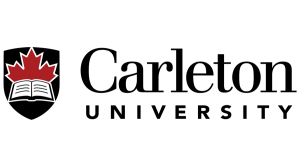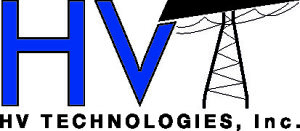By:
Grigore Stamatescu
Mihaela M. Albu

Abstract: Distributed measurement systems generate large quantities of online and streaming datasets that need to be processed in real-time for decision support and/or control purposes. In many situations the resulting data cannot be used directly by intelligent algorithms and suitable data preprocessing pipelines need to be defined and implemented. Furthermore, the heterogenous reporting rates, embedded measurement models and spatial scales at which the measurements are collected need to be aligned in a robust manner for many tasks. The tutorial will present current approaches for time series data mining with the goal of information extraction in imbalanced class problems e.g. labelling of micro-scale transient regimes, noise reduction, and improving the computational efficiency of learning algorithms for prediction and anomaly detection. Automatic feature extraction and selection is described as a useful tool that reduces the input space size while conserving the key features of the data generative process that yields the measurements. Domain knowledge is required to adapt generic algorithms and tools to the specific nature of the application. Hands-on activities will highlight the practical use of the Python tsfresh and matrixprofile open-source packages on real residential active power measurements collected in the context of two research projects.
 By: James A. Smith, Idaho National Laboratory
By: James A. Smith, Idaho National Laboratory
Abstract: Materials State Awareness (MSA) research and development has advanced science and technology that addresses the sensing of the material’s state at the microstructure level. A crucial element of MSA is predicting the future state of the material system. MSA technology can be used to predict and control process states. The key difference between Process State Awareness (PSA) and standard control techniques is that the in-situ materials characterization of the product is a major input into the control system along with standard industrial process sensors. Successful implementation of a PSA program will require close collaboration between sensor researchers, materials experts and measurement specialists.
This tutorial will discuss PSA development efforts within industrial, national lab, and medical sectors. The MSA techniques and philosophy will be confirmed to be at the core of PSA development that will determine and predict the state of a process.
 By: Dr. Kamel Haddadi, University of Lille
By: Dr. Kamel Haddadi, University of Lille
Abstract: RF and microwave techniques and instrumentations have been widely described in the literature to address electrical or/and dielectric characterization of devices and materials. Thanks to its high potential, microwave nondestructive testing and evaluation (MNDT&E) has attracted industry in a wide range of sensing applications at different scales of dimensions. MNDT&E of materials is an important science that involves the development of RF and microwave instrumentations including sensors/probes, methods and calibration techniques to extract the quantities of interest from the measured signals, applications including detection of cracks, defects, dielectric homogeneities, characterization of complex permittivity. MNDT&E refers to alternating signals or electromagnetic waves in the frequency range 300 MHz – 300 GHz. The spatial resolution mainly governed by the wavelength of operation is theoretically limited by the diffraction limit, i.e. half free-space wavelength. Thanks to their penetrations in non-metallic materials, MNDT&E techniques have advantages over established NDT techniques. This talk will review the foundations including wave to material interaction, microwave instrumentation, measurement methods and applications.
By:
Lyudmil Vladimirov (University of Liverpool)
David Kirkland (Defence Research and Development Canada)
Peter Carniglia (Defence Research and Development Canada)
Emily Hunter (Defence Research and Development Canada)
Divy Raval (Defence Research and Development Canada)
Nikki Perree (Defence Science and Technology Laboratory)
James Wright (Defence Science and Technology Laboratory)
Abstract: It is currently difficult and time-consuming for academic researchers to recreate state-of-the-art tracking and state estimation algorithms to benchmark their work. Comparison of new algorithms with existing solutions involves recoding algorithms from the literature. Industrial users also find it difficult to assess which algorithms meet their requirements.
The Stone Soup framework is designed to provide a flexible and unified software platform for researchers and engineers to develop, test and benchmark a variety of existing multi-sensor and multi-object estimation algorithms. It profits from the object-oriented principles of abstraction, encapsulation and modularity, allowing users and developers to focus only on the most critical aspects of their problem.
These tutorials will introduce participants to Stone Soup’s basic components and how they fit together. They are delivered by way of demonstrations, set tasks and interactive sessions where participants will be encouraged to write and modify algorithms.
The first tutorial will begin with basic examples using linear transition models, abstract range-bearing sensors and single-targets using the extended and unscented Kalman and particle filters. Multiple targets, clutter and methods of data association will be introduced. The second tutorial session is an interactive grouped activity, applying Stone Soup to several scenarios involving simulated and real-world data.
 By: Phil Bartley, Innovative Measurement Solutions, Inc.
By: Phil Bartley, Innovative Measurement Solutions, Inc.
Abstract: The permittivity (dielectric properties) of a material is one of the factors that determine how the material interacts with an electromagnetic field. The knowledge of the permittivity of materials and its frequency and temperature dependence is important in various areas of science and engineering in both basic and applied research. It has always been an important quantity to electrical engineers and physicists involved in the design and application of circuit components. Over the past several decades the knowledge of permittivity has become an important property to scientists and engineers involved in the design of stealth vehicles. These applications are most often associated with the defense and space industries. For the typical electrical engineer permittivity is a number that is needed to apply Maxwell’s equations. Besides discussing the various techniques that can be used to measure permittivity, one of the purposes of the tutorial is to explain why a material has a particular permittivity. The short answer is that a material has a particular permittivity because of its molecular structure. Another purpose is show how permittivity can be related to other physical material properties.








